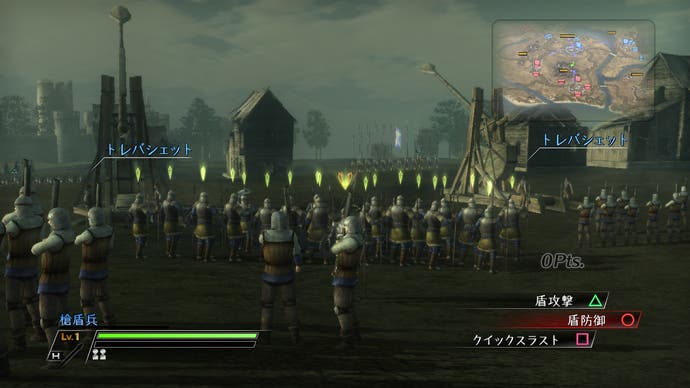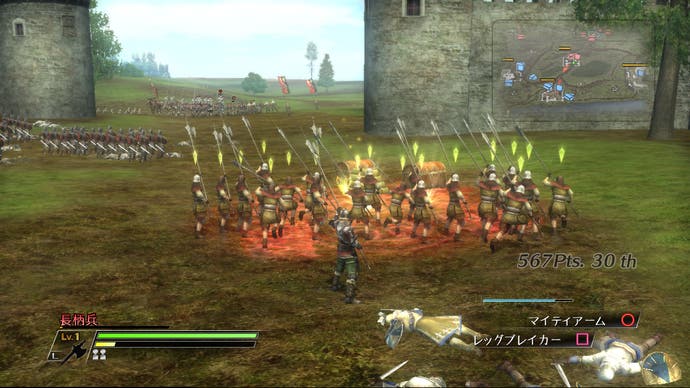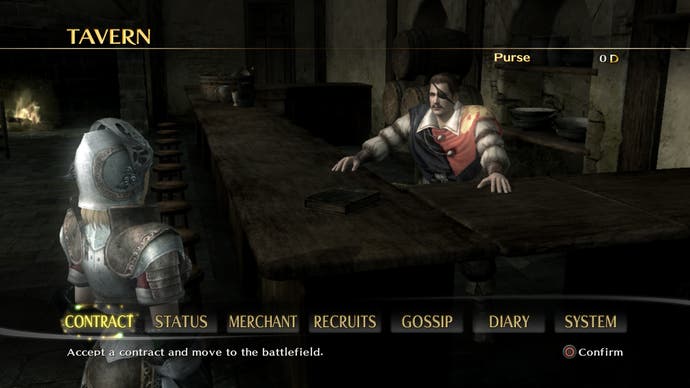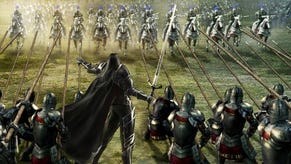Bladestorm: The Hundred Years' War
Hundred out of a hundred.
Koei's Dynasty Warriors games just don't sell very well outside of Japan. The solution is obvious: take all the hallmarks of the Warriors series, and apply them to European history. Hence Bladestorm.
The opening movies are completely Koei: volleys of arrows rain down on banks of superbly CGI men-at-arms, who proceed to smash into each other, slicing through armour in extreme (and extremely stylish) close-up. They're not, strictly speaking, historically accurate, but by gosh are they superb - and anyway, if you want historical accuracy, you're probably better off with a good book (like John Keegan's The Face of Battle, for example). Bladestorm is as committed to fantasy history as all the other Warriors games.
But Bladestorm's familiarity isn't entirely helpful. If you set about the game expecting to dive into a European Dynasty Warriors, it's initially disorientating: instead of taking control of a character sashaying across the battlefield, shaping the conflict by direct and heroic action, characters in Bladestorm shape the face of battle by associating with other units and telling them what to do. Indeed it's much safer, most of the time, to hang back and make sure you don't get inextricably mixed up in the middle of a messy mêlée.

The way it works is that you take control of units by walking up to them and pressing the X or A button (depending on your console). Once they're under your control, they'll follow you around and obey your orders: hold down R1/Right trigger to make them attack, and use the other three face buttons to perform special moves (that then take a little while to recharge). Most of the time you'll be given a few days to make your way across the battlefield and capture a key objective, but all of the time your focus will be on marshalling your men rather than single-handedly smashing through enemy lines.
So it's more Dynasty Warriors meets Kessen then, though even that fails to do justice to the novelty and ingenuity of Bladestorm. Like so many of Koei's battlefield action games, you'll need to keep a close eye on the overall map, and the ebb and flow of battle. Like several previous Koei titles, you'll need to decide whether to go for a high-risk direct approach and head straight for your objective, or to opt for the safer, but potentially more laborious tactic of capturing bases along the way. You'll need to keep an eye on any support troops, watching not to stray too far from them. And you'll need to decide whether to finish a contract early, or spend a bit longer on the battlefield in order to level up your abilities.

Crucially though, all of this has a very different feel because of the novelty of commanding banks of troops. First of all, you'll need to make sure that you don't get isolated from your unit, because if you do, you'll quickly lose out to weight of numbers. Second, each troop type has a very different effect in combat and you'll need to understand them all. Each unit has a different selection of special attacks, and some are especially strong, or weak against specific other types. You'll also need to consider how skilled you are at commanding a particular unit type: pikemen might be handy against cavalry, but not if you've never controlled them before and you're facing elite knights. But then you'll also need to balance the need to level up your skill with a new unit against the ease of falling back on familiar ones.
The way you learn to control new types of unit is by acquiring battle books, which brings us on to another major feature of medieval combat, Koei-style. Between contracts, you'll hang out at a tavern, where you can chat to NPCs, distribute experience points that you earn with each particular type of unit, and buy new armour and weaponry, before seeing what new contracts are available. You'll also be able to recruit your own units, who you can call into play during battle by pressing R1, or buy banners, to provide temporary power-ups, by pressing L1. Both are capable of dramatically shifting the tide of battle in your favour, which is handy, because your ultimate goal, by picking contracts that range across France and England, is to increase your renown as a mercenary and shape the course of history.

While you're shaping the course of history, you'll benefit from a structure that offers a fairly generous learning curve - indeed the ability to pick contracts means that if you're finding a crucial mission a bit difficult, you can power yourself up by completing lesser contracts. And you'll get to fight on battlefields that are depicted with all sorts of technical flourishes: little bunnies and deer frolic and gamble during any quiet lulls; and the game boasts a suitably rousing operatic score. Sure, there are niggles like comically bad voice-acting and bizarre European accents, but then, this is a videogame after all, and a Japanese one at that.
It's also a very, very good videogame: another brilliant evolution of Koei's unique interpretation of the real-time strategy genre, and every bit as satisfying as previous efforts. What it lacks in terms of the speed and immediacy of, say, Gundam Musou, it makes up for with strategic range, design ingenuity, and conceptual novelty. Whether it'll sell any better than the Dynasty Warriors games, though, is anybody's guess. It certainly deserves to.



